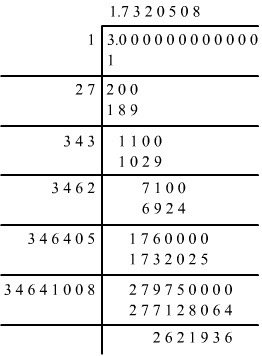Various types of numbers are part of mathematics. They are natural, whole, real, positive, negative, rational, irrational and so on. Real numbers are divided into two types such as rational numbers, irrational numbers. Here we will discuss irrational numbers, how to represent irrational numbers in decimal form, example questions.
Irrational Numbers Definition
Irrational numbers are numbers that cannot be expressed as fractions. The conversion of decimals to fractions for those numbers is impossible. The meaning of irrational is not having a ratio. The number can’t be expressed other than by means of the root. Irrational numbers will have non-terminating decimals with non-repeating digits. The examples of irrational numbers are √7, pi, Euler’s number, √5.
Also, Check:
Decimal Representation of Irrational Number
A decimal representation of a number in the form of decimal numbers is shown here. All rational and irrational numbers will have the following type of decimal representation.

Irrational numbers will have non-terminating decimals with non-repeating digits. The method of representation of irrational numbers in decimal form is given here.
The decimal representation of irrational numbers is the way of expressing the most accurate value of the irrational number in the form of the decimal number.
For example, consider the decimal representation of √3:

Therefore, √3 = 1.7320508… It is nonterminating.
Problems on Representation of Irrational Numbers in Decimal Form
Problem 1:
What is the decimal representation of √4?
Solution:
We know that 4 is a square number
Hence, the exact value of its square root will be a rational number.
Hence, √25 = √5² = 5
Problem 2:
A person bought 100 bananas from a nearby fruit vendor but later found out that 5 of them were rotten. Can you tell the fraction as a decimal of the rotten apples to the total apples bought by him?
Solution:
Here, we have 5 rotten bananas out of 100
So, the fraction is \(\frac { 5 }{ 100 } \)
On dividing 5 by 100, we get the result as 0.05
The rotten bananas to the fresh bananas in decimal form are 0.05.